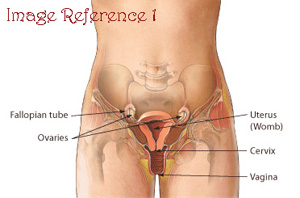Pelvic Inflammatory Disease (PID)

Pelvic Inflammatory Disease (PID) is a disease that infects the female reproductive organs and occurs when bacteria transmitted from sexual contact spreads to the upper genital tract and uterus from the vagina (Mayo Foundation for Medical Education & Research, 2012). In the US it is estimated that over 750,000 women have an episode of acute PID. Out of these cases, 10-15% of the women could become infertile due to the PID infection (CDC, 2012).
Chlamydia is one of the major causes of PID although other organisms have been linked such as gonorrhoeae, gardnerella vaginalis, haemophilus influenza, and other anaerobes (Shepherd, 2012). The virus can also enter the body through some surgical/office procedures like endometrial biopsy, therapeutic/elective abortion, childbirth, miscarriage, or insertion of an intrauterine device (Medline Plus, 2012). The group who is the highest risk for developing PID is menstruating women under 25 who do not use contraception, have multiple sex partners, and residing in an area with a high prevalence of sexually transmitted infections (Shepherd, 2012).
PID Facts
Prevention
Prevention of PID is included in the same prevention criteria for many STIs.
- Practice safe sex (Stoppler, 2012)
- Be aware that intrauterine birth controls may increase the risk of contracting PID (Stoppler, 2012)
- Ensure all partners go through regular screenings (Stoppler, 2012)
- Limit the number of sexual partners (Stoppler, 2012)
- Avoid frequent vaginal douching as this may push bacteria further into the genital tract (Stoppler, 2012)
- Wipe from front to back after bowel movement to avoid pushing bacteria into the genital tract (Stoppler, 2012)

Community Connections
http://www.experienceproject.com/groups/Suffer-From-Pid/85300
http://www.inspire.com/conditions/pelvic-inflammatory-disease/
http://forums.webmd.com/3/gynecology-exchange/resource/21
Article References
CDC. (2012).Pelvic Inflammatory Disease (PID) - CDC Fact Sheet. Retrieved 11 23, 2012, from Centeres for Disease Control & Prevention: http://www.cdc.gov/std/pid/STDFact-PID.htm
Mayo Foundation for Medical Education & Research. (2012, 08 10). Pelvic inflammatory disease (PID). Retrieved 11 23, 2012, from Mayo Clinic: http://www.mayoclinic.com/health/pelvic-inflammatory-disease/DS00402
Medline Plus. (2012). Pelvic Inflammatory Disease (PID). Retrieved 11 23, 2012, from MedlinePlus: http://www.nlm.nih.gov/medlineplus/ency/article/000888.htm
Shepherd, S. M. (2012). Pelvic Inflammatory Disease. Retrieved 11 23, 2012, from Medscape Reference: http://emedicine.medscape.com/article/256448-overview
Stoppler, M. C. (2012). Pelvic Inflammatory Disease. Retrieved 11 29, 2012, from eMedicineHealth: http://www.emedicinehealth.com/pelvic_inflammatory_disease/page2_em.htm
Image References
Someone else's art deserves recognition! The images presented in this article were borrowed from the following places:
Header Image: http://upload.wikimedia.org/wikipedia/commons/b/bd/Salpingitis_-_low_mag.jpg | Retrieved May 4, 2015
Image 1: http://www.womenshealth.gov/publications/our-publications/fact-sheet/images/pid.gif | Retrieved November 29, 2012
Image 3: http://kidshealth.org/teen/infections/stds/headers_77627/PID1.jpg | Retrieved November 29, 2012